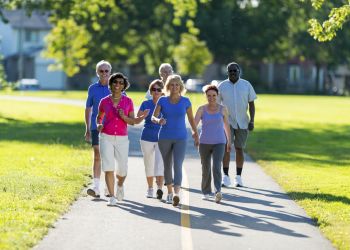Today is National Youth HIV & AIDS Awareness Day (NYHAAD), the only national observance highlighting the impact of HIV & AIDS on young people. In the United States, young people aged 13-24 account for 22% of new HIV diagnoses and nearly half of the 20 million STIs reported each year occur among young people aged 15-24.

Adolescents face unique needs and barriers in accessing sexual health services and information, including stigma, inadequate sexual health education, confidentiality concerns, transportation issues, and culturally incompetent healthcare providers. Because of these challenges, young people are often prevented from gaining the knowledge and tools to protect themselves from HIV and other STIs. As a result, they often engage in sexual risk behaviors, including sexual activity without condoms and under the influence of drugs and/or alcohol. LGBTQ+ young people, particularly men who have sex with men (MSM) of color, face heightened risk due to biological and societal factors, among them homophobia and transphobia, which exacerbate the stigma associated with adolescent sexual activity and sexual health.
Addressing Adolescent Sexual Health at the Local Level
Not only do young people bear a disproportionate burden of the HIV epidemic, but they are the least likely of any age group to know their status, be linked to and retained in care, and have a suppressed HIV viral load. Closing the gaps in HIV prevention, testing, and care for young people is critical: diagnosis is the first step in accessing treatment, and people living with HIV who are on treatment and have an undetectable viral load have effectively no risk of sexually transmitting HIV. Further, as the behaviors and attitudes developed during adolescence often endure throughout adulthood, providing young people with the knowledge and skills to develop healthy habits results in exponential health benefits for decades to come.
Local health departments (LHDs) play a critical role in ensuring that young people can protect themselves from HIV and other STIs by offering youth-friendly health services and providing accurate, comprehensive sexual health information. At NACCHO, we’re working to support and equip LHDs to prevent and respond to HIV and STIs among adolescents through partnerships with schools, youth-serving organizations, and other community stakeholders and by engaging youth in program and service design and implementation. As more than 90% of young people attend schools during critical years of their physical and social development, schools are key partners in shaping students’ health knowledge and behaviors.

Currently, we’re funding and providing capacity building assistance to four LHDs to strengthen community partnerships, particularly with school districts, to implement strategies to prevent HIV and STIs among adolescents through school-based programs. To amplify our reach to our national membership of LHDs, we’re also hosting a series of workshops and consultations and creating tools and resources to increase the capacity of LHDs to partner with school districts and increase youth access to sexual health services, implement and strengthen sexual health education programs, and establish safe and supportive school environments, particularly for LGBTQ+ young people. In the coming months, we’ll be publishing a series of tools to support LHDs in analyzing and engaging stakeholders, establishing and maintaining community coalitions to advance adolescent sexual health, and developing action plans to prevent HIV and STIs among young people.
LHDs are the first line of defense in protecting and promoting the health and safety of our young people, including from HIV and STIs. Supporting adolescents in making informed and healthy decisions requires acknowledging the distinct nature of their needs and the challenges they face in accessing sexual health services and thoughtfully targeting and adapting programming for an adolescent audience. The experiences and needs of young people, as well as youth culture and language, are constantly evolving, and thus, ensuring health services and education are youth-friendly requires adaptability and authentic and sustained youth engagement. Adolescents are experts on their own health and can offer perspective and insight to help LHDs effectively reach young people in their community.
Through diverse partnerships and youth engagement, LHDs can ensure HIV/STI prevention and care are affordable, accessible, equitable, and acceptable to adolescents. By partnering with schools and other community-based organizations to offer school-based or school-linked services, LHDs can overcome the barriers adolescents face in accessing health services and information. LHDs can also engage primary care providers to increase access to HIV/STI prevention, testing, and treatment and identify non-clinical settings to promote or offer services, bypassing the stigma associated with sexual health services.
Looking Ahead
In the coming months, NACCHO will be launching an Adolescent Sexual Health webpage to disseminate resources to support LHDs in advancing HIV and STI prevention among young people. Stay tuned for an announcement about this. In the meantime, we encourage you to celebrate NYHAAD and check out the following resources, which have been particularly useful to LHDs in implementing strategies to prevent HIV and STIs among adolescents through school-based programs:
- Buffalo Public Schools Condom Availability Program Policy: Condom availability program policy and timeline approved by the Board of Education in Buffalo, NY.
- Project Connect Implementation Guide: CDC-developed resource to support LHD-led, school-based STD screening programs.
- How Schools Work & How to Work with Schools: A NASBE-developed resource for organizations seeking to partner with schools on public health projects.
- Establishing Organizational Partnerships to Increase Student Access to Sexual Health Services: A resource guide for schools and public health partners with sample policies and procedures.
- Developing a Referral System for Sexual Health Services: An implementation kit for schools and public health partners student referrals.



